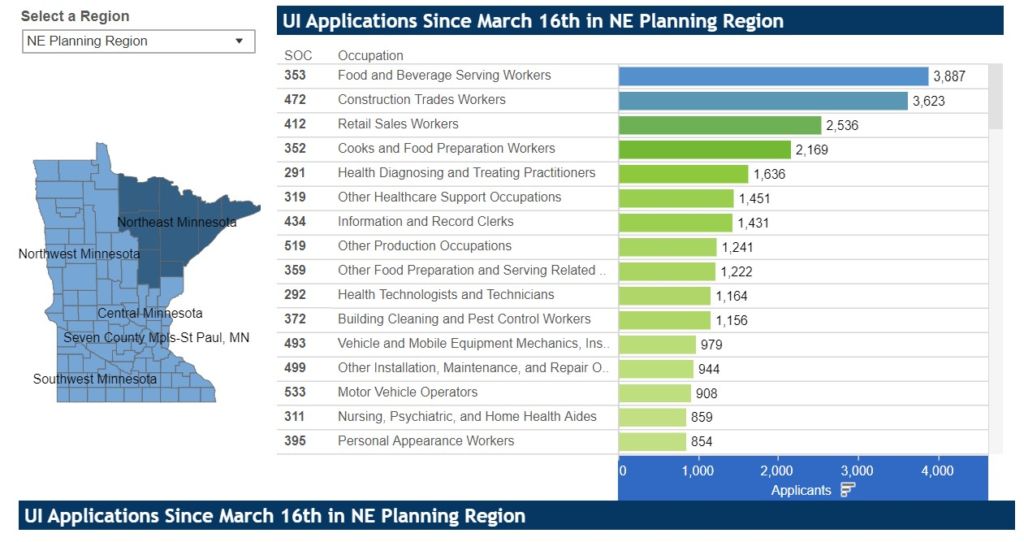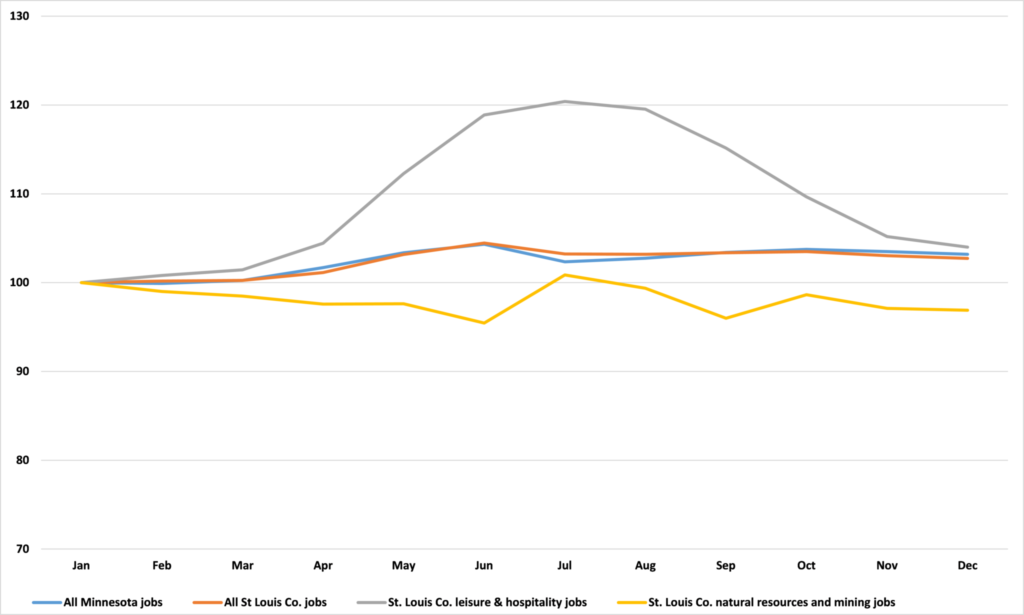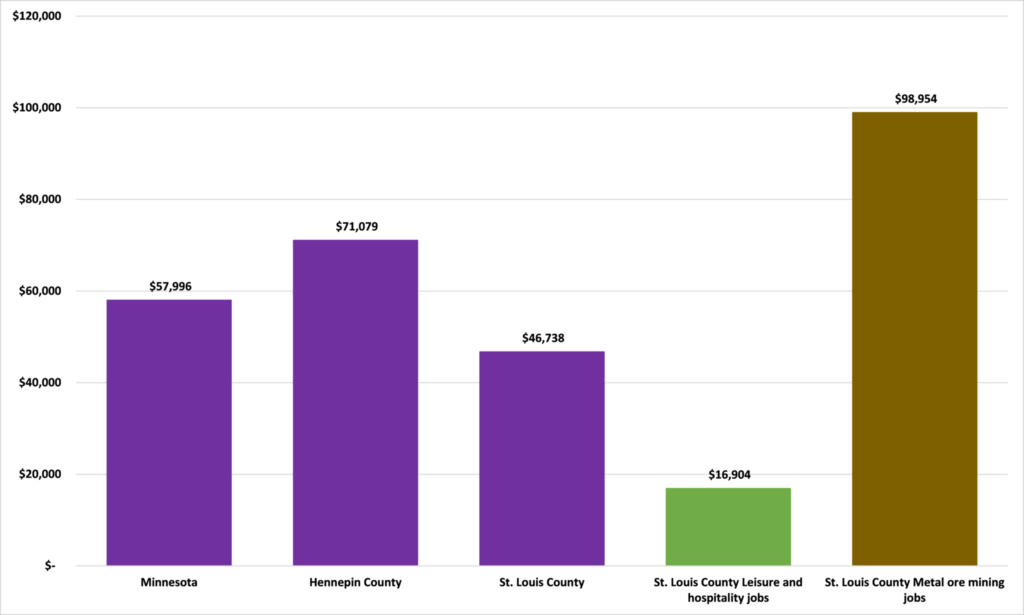Northeast Minnesota Has Lost 10,500 Tourism-Related Jobs Since March 16th
Mining opponents in Minnesota often argue that instead of developing some of the largest undeveloped deposits of copper and nickel in the world, Northeastern Minnesotans should instead focus on creating jobs in the tourism industry.
Unfortunately, this is an argument for widespread unemployment in the era of COVID-19, because according to the Minnesota Department of Employment and Economic Development (MNDEED), the Northeast economic planning region has seen 10,500 job losses in sectors of the economy that are the most related to the tourism industry, including food and beverage service workers, retail sales workers, cooks and food preparation workers, and other service industry positions, as you can see in the graph below from MNDEED.

This is bad news for the families that depend upon these jobs. Making the situation worse for these families is the fact that tourism in Northeastern Minnesota is highly seasonal. John Phelan, American Experiment’s senior economist, discussed the seasonality of tourism jobs last year. He found that most of the jobs created by the leisure and hospitality sector in St. Louis County occur in June, July, and August, with employment dropping off after the peak three months in summer.
Considering we are well into July, it appears 2020 will likely be a lost year for the tourism industry in Minnesota.

Mining has not escaped the virus unscathed. According to the MNDEED website, approximately 1,900 jobs associated with the mining industry, like extraction workers, mechanics, and plant and systems operators have been laid off during this same time period. This is very close to estimates published in the Star Tribune, which stated 1,750 people in the mining industry were unemployed due to the economic slowdown.
Thankfully, reports indicate mining companies will come back online when the demand for metal increases, and operations are estimated to resume in late summer.
The loss of tourism employment due to COVID highlights the importance of the mining industry. While both industries are affected by larger economic trends, mining was deemed essential, while tourism was not. Mining jobs also pay 5.8 times as much as the average tourism job in St. Louis County, according to data from the Bureau of Labor Statistics.
As a result, mining helps support more jobs in the rest of the economy, compared to tourism jobs.

The high wages and essential nature of the mining industry are why Northeastern Minnesotans overwhelmingly support environmentally responsible mining in their area. The industry versus tourism debate is a false choice. Northern Minnesota can – and should – have both industries, but it is important to understand that mining is the real driver of the regional economy, and tourism is just along for the ride.